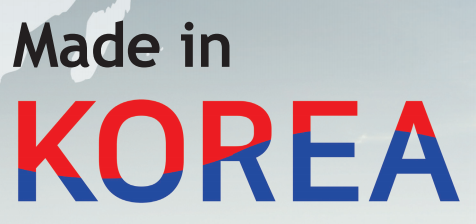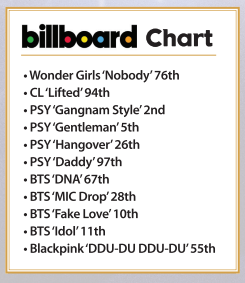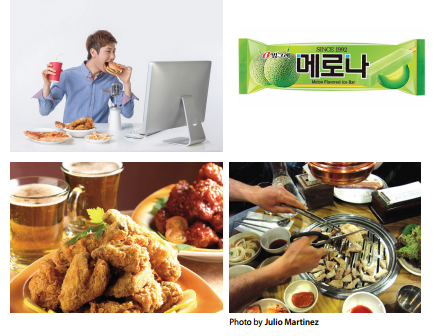Roh Kyu-lee, Park Yang-geon Reporters

Do you know Gangnam style? Do you know Kimchi and Bibimbap? Until now, many Koreans have asked foreigners these questions, because they were curious about foreigners’ perceptions of Korean culture and wanted to spread it. But now, Korea is well known all around the world through its culture and various industries such as K-POP, dramas, and cosmetics. Many Koreans are proud of their unique culture and they continue creating new trends. Let's enjoy the Korean culture where beauty and fun coexist together!

● K-POP: Attractive Intruder which Stimulates Emotions Inside
K-POP, which can be called the ‘center of the Korean wave’, has been preparing for overseas expansion and has caused quite a boom in nearby Asian cultures. In the early 2000s, rap and dance groups began to flourish in Korea, and this wave of popular culture formed the current K-POP phenomenon. Since then, K-pop idol culture has been spreading all around the world. In Korea, 'Idol' is used as a light meaning of a popular celebrity for teenagers.
H.O.T. (1996~2001)
Tong Vfang Xien Qi (TVXQ!) (2004~ NOW)
Super Junior (2005 ~ NOW)
BIGBANG (2006 ~ NOW)
Girl's Generations (2007 ~ NOW)
Kara (2007 ~ NOW)
2NE1 (2009 ~ 2016)
EXO (2012 ~ NOW)
BTS (2013 ~ NOW)
Twice (2015 ~ NOW)
BLACKPINK (2016 ~ NOW)
-Billboard Chart
Wonder Girls ‘Nobody’ 76th
CL ‘Lifted’ 94th
PSY ‘Gangnam Style’ 2nd
PSY ‘Gentleman’ 5th
PSY ‘Hangover’ 26th
PSY ‘Daddy’ 97th
BTS ‘DNA’ 67th
BTS ‘MIC Drop’ 28th
BTS ‘Fake Love’ 10th
BTS ‘Idol’ 11th
Blackpink ‘DDU-DU DDU-DU’ 55th

● K-Drama: A Friend Telling Korean Culture
Korean dramas played a major role in conveying Korean culture. The meeting of famous actors, who show perfect acting, and creative Korean script writers has fascinated many people outside of Korea. Let's look at a list of Influential dramas overseas!
-Winter Sonata (2002)
In November 25, 2004, about 7,000 fans were crowded at Narita Airport in Japan. It was to see Bae Yong-joon, the main character of ‘Winter Sonata’. ‘Winter Sonata’, a romance drama that was initially aired in Korea in 2002, signed a contract with a Japanese broadcasting company in April 2003 and was subsequently aired in Japan. Geoje Island and Nami Island where ‘Winter Sonata’ was filmed, were crowded with foreign tourists.
-Jewel in the Palace (2003)
This drama is about the female character who overcame hardship and reached the position of the king's doctor. The drama recorded a 55 percent viewer rating in Korea. It was exported to the Middle East and Asian countries and became very popular. The drama viewer rating peaked at 50 percent in Hong Kong and recorded 86 percent in Iran. In China, more than 100 million people watched at the time. Meanwhile, in Britain, a signature campaign was even launched to air the drama against the BBC.
-My Lovely Samsoon (My Name Is Kim Sam-soon) (2005)
This drama is about a woman with a funny name, living confidently as a patissier. The drama recorded a 50 percent viewing rate in Korea. In the Philippines, the ratings reached 40 percent and the drama was remade under the title ‘Ako si Kim Samsoon’. It was made into a TV series in the United States. China, Turkey and Mexico also officially aired the drama. At Japan's largest video and record rental company TSUTAYA, ‘My Lovely Samsoon’ recorded the largest number of loans in three years from 2006 to 2008.
- My Love from the Star (2013)
This drama is about the woman who fell in love with an alien living in Korea after he fell from UFOs a long time ago. 'My Love from the Star' shook China. On the Chinese website, the drama had more than 3 billion views. Especially Chimaek (a new word combining 'fried chicken' and 'beer') was passed to China, creating a huge Chimaek craze. Sales of clothes and lipstick that Jun used in the drama skyrocketed. Incheon Songdo, the main filming location of the drama, was visited by many Chinese.
-Descendants of the Sun (2016)
This drama is about the love of soldiers and doctors who were sent to war. It was popular enough to achieve viewer ratings of more than 35 percent in Korea. The drama has accumulated 400 million views with just two broadcasts in China's largest online streaming site IQiyi. In the week when the drama was aired, the average daily search volume of the drama exceeded 1.33 million in Baidu, China's largest portal site. The filming location of the drama became a tourism product led by the government.
In addition, Korean culture is spreading with Korean entertainment shows, SNS and the game industry. Korean dramas are playing a big role in the expansion of the Korean Wave, along with the leader, K-pop.

● Korean Wave via Internet platform: Further and Quicker
—With Facebook, YouTube, Twitter, and Netflix
In modern times, social networking and internet platforms have become very important elements of popular culture and the center of the industry. In the past, celebrities used to build awareness by holding concerts or promoting overseas. But now, social networking sites allow them to build awareness without doing any overseas activities. The 21st century internet platform plays an important role in spreading the Korean Wave culture. So, let’s look at the case.
-PSY
In 2012, as most people likely know, a music video that would rock the world came out on YouTube. That was PSY's 'Gangnam Style'. The video spread instantly on YouTube, surpassing 500 million views in 100 days. Thanks to this trend, 'Gangnam Style' ranked second for seven weeks on the Billboard chart. It topped many European countries’, Australia’s and Canada's official music charts. Psy's music videos and music were not difficult, but there were various cultural elements. The easy-to-follow horse dancing, funny actions of PSY and music videos were attractive to people. The music video recorded more than 3.24 million views on YouTube in November 2018. This craze was possible because YouTube was accessible to people all over the world. Parody and cover videos were produced on YouTube, also affecting the Gangnam style boom.
-BTS
Currently, BTS has become the most popular group in the world. BTS is a representative group that has benefited from the internet platform. To popularize the group, creators of YouTube, who shoot the reaction videos, influenced the public by promoting early BTS music videos such as 'Dope' and 'RUN'. Their stylish dances and exciting music created contents that anyone could enjoy. BTS communicated with fans through the internet platform and talked with real-time chat. The promotion agency of BTS was not a big one, so they actively used SNS and YouTube. BTS also took videos and photos of daily scenes, such as cooking and dancing exercises, and shared them on the platform with fans. By turning to SNS, it was easy to see BTS. They quickly became familiar to their millions of fans around the world.
-The charm of K-POP
The K-POP music video is produced with very sophisticated, high quality equipment and technology. The elaborate choreography of a group attracted many people's eyes, and the KPOP, which is combined song and dance, has a very attractive feature. K-POP groups of diverse styles satisfied different tastes of fans in many countries. These factors fit perfectly on YouTube, a platform that satisfies eyes and ears around the world.
Korean culture has been shared worldwide through the internet platform, so everyone can enjoy it without discrimination. Korean dramas, entertainment shows, music and dance, created and developed many industries with the goal and role of perpetualizing on Korean culture. Many foreign companies and the future entertainment industry markets are observing Korea's culture closely; its growth potential is also high.

● K-food Reaching Out to The World
When foreigners are asked about Korean foods, they used to answer Bibimbap, Bulgogi or Kimchi. But nowadays, food that Koreans eat widely such as ramen, choco-pie, soju is known as K-food. Mukbang, meaning ‘eating broadcast’ in Korean (muk standing for ‘to eat’ and bang for ‘broadcast’) contributed to spreading K-food abroad. Korea is the country where Mukbang originated, so Korea is leading this ‘mukbang market’. This is why foreigners can easily experience and develop an interest in many different kinds of K-food online, at times even using them on their YouTube platforms. For example, the boom in the fire noodle challenge led to an increase in overseas sales of hot chicken flavored ramen, which was twice more than domestic sales in Korea. Melona, which is a very common ice cream in Korea won great popularity in Brazil, which occupied 20% of the ice cream market in Brazil. Likewise, many different kinds of K-foods are now imported and winning popularity abroad. In addition, they are produced in different and various ways that suit the culture of each country.
These huge interests in K-food made the K-food market big and global. The most representative example is fried chicken. There are many different flavors and seasonings when preparing fried chicken in Korea such as spicy sweet fried chicken, chicken with green onions, and baked fried chicken. These unique tastes have captured the foreigner’s appetite, which have led Korean chicken enterprises to advance abroad and achieve great success. In addition, the combination of beer and chicken known as ‘chi-maek', is also coming into the spotlight due to the popularity of Korean fried chicken.
Another representative K-food is grilled pork belly. There are pork bellies everywhere, but Korea is a country where pork belly is eaten very commonly. In Korea, pork belly symbolizes get-togethers. Many foreigners might find this grilled pork belly unfamiliar, but after trying it, their misconceptions disappear and they really enjoy eating it. The Korean culture of get-togethers is mostly accompanied by grilled pork belly and soju, the representative alcohol in Korea. The interest in grilled pork belly naturally led to an interest to soju, and likewise ‘chi-maek'. Many foreigners also try grilled pork belly with soju.

● Fall into the World of K-Beauty
Interests in K-pop and K-Drama naturally led the foreigner’s attention to K-beauty. According to Korean Customs Service, Korea exported $3.3 billion worth of cosmetics in 2017, which was the highest ever, and it was three times larger than the amount of imports of cosmetics. Base cosmetics such as toner and lotion made up the majority imported, because they usually consist of many functions in just one product. Moreover, organic and oriental medicine cosmetics attracted foreigners too.
Not only cosmetics, but also K-style make-up items are a big hit. Nowadays, getting K-style makeup and styling has become a mode of tourism. A so-called K-beauty tour, tourists experience skin care, idol-like make-up, hair styling and so on. Today, the K-beauty market is occupying a large section of Korean export products of Korea, especially to China and Hong Kong. Moreover, skin care methods such as Korean style double cleansing, scrubbing dead skin cells are also becoming popular.
In the past, ‘Made in Korea’ symbolized well made and elaborately made products. Perhaps these good cognitions of Korea may lead these Korean culture fads worldwide. But you must always remember, culture cannot be forced, it has to be adopted naturally.

